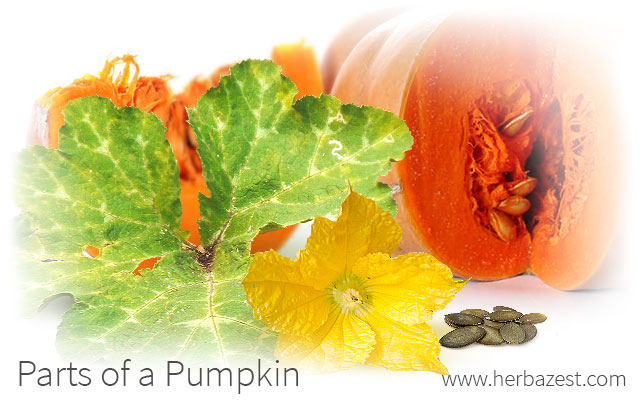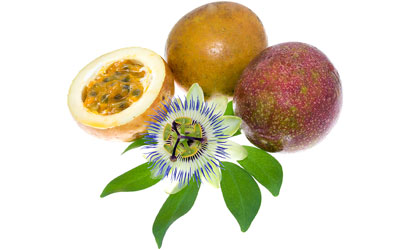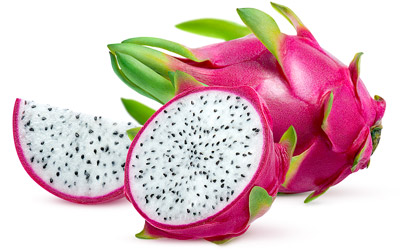Pumpkins are annual, crawling, herbaceous plants that produce rampantly-growing branches and vines, and a robust, hard-shelled fruit. The pumpkin fruit is perhaps the most commonly used part of a pumpkin, and it can be easily prepared in a wide variety of both sweet and savory recipes, while the leaves and flower are sometimes used as vegetables. Besides their culinary use, the various parts of a pumpkin are also said to hold many traditional healing functions.
The Parts of a Pumpkin Fruit
Large, flat seeds, and a soft, fleshy pulp can be found inside a pumpkin fruit. Commonly associated with bright orange, the fruits may also vary in their size, color, and texture; the domesticated crops tend to produce a larger fruit and more color variations, for example. The pumpkin fruit is known for its hard, thick outer shell, which encloses the pulp and protects the seeds.
Pumpkin flesh can be used in a number of hearty stews, entrees, and delicious desserts, while the roasted seeds are often sprinkled over salads or eaten alone as a healthy but satiating protein-filled snack. Traditional Ayurvedic medicine points to the ingestion of pumpkin as a means to reverse the effects of fatigue and thirst. Because of its cooling and astringent properties, the flesh is also applied topically for the treatment of burns, while the seeds are often used for diuretic and deworming purposes.
Other Parts of a Pumpkin Plant
Pumpkins grow on vines and usually have round leaves with serrated edges and five deep lobes. Wiry tendrils hold the pumpkin in place, making sure the fruit stays well anchored to the vine as it grows in size. Some genetic variations of pumpkin are also known to produce prickly, glass-like thorns.
- Pumpkin flowers are brightly-colored yellow and orange. However, despite being colorful and pretty, the blossoms are more than simply ornamental - they are extremely important parts of a pumpkin plant.
Each plant is equipped with both male and female flowers. Male flowers aid pollination through strategic placement and close contact with bees and female flowers. The pumpkin fruit grows outwardly from the newly-pollinated female flowers.
Pumpkin blossoms and leaves can be consumed as vegetables, and they are commonly used in a variety of salads. Pumpkin flowers and leaves are not a significant source of fat, so pairing them with healthy fats, like extra virgin olive oil, may help to complement their nutrients while bringing out more of their flavor.
- Pumpkin leaves have also been used medicinally as a painkiller and as a treatment for nausea and low hemoglobin levels in the blood.
The various parts of a pumpkin can be extremely beneficial, as they have a wide range of culinary and medicinal uses. The pumpkin fruit, made up of flesh and seeds, is the most versatile and commonly-used part of the pumpkin. Meanwhile, the pumpkin's flowers and leaves are comparable to vegetables and are used in various sides and salads.
Sources
- Purdue University, Cucurbits
- University of California, Cucurbitacae - Fruits for peons, pilgrims, and pharaohs
- University of Illinois, Pumpkin
- Medicinal Plants of the World, pp. 117, 407
- Kew Royal Botanic Gardens, Cucurbita pepo (pumpkin)





